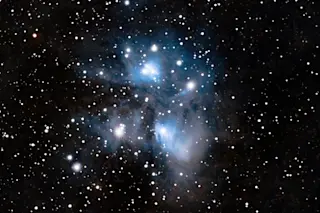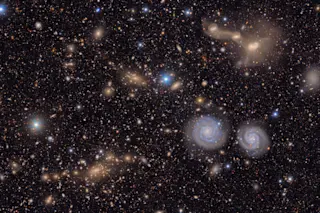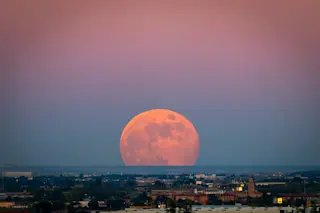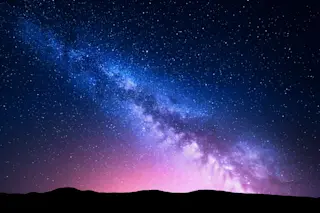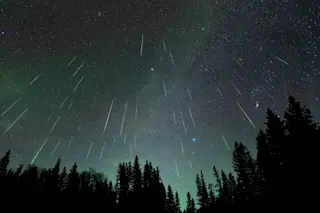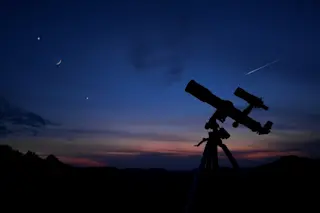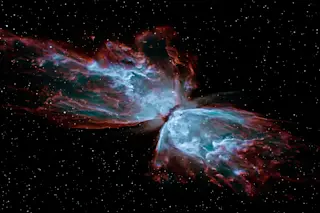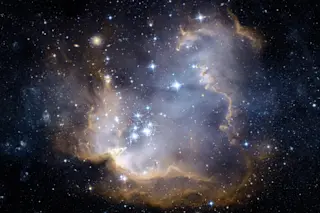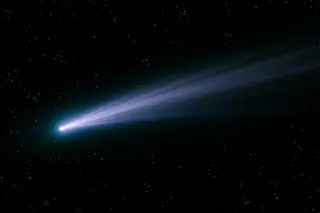Stéphane Guisard is an incredibly gifted astrophotographer, a man who strives to take the very best and most beautiful images of the sky that he possibly can. If his name is familiar, it might be because I linked to his amazing time-lapse video of the sky over Paranal, his all-sky picture from the same location, and most especially his stunning picture of the sky over Easter Island, which was so beautiful I picked it as my #3 photo for the Top Ten Astronomy Pictures of 2009. He just sent me a note about a new set he's created, and it's every bit as lovely as the ones from Rapa Nui. These were taken in northern Guatemala, at the site of some ancient Mayan ruins. They show the stars above these Mayan temples, and, well, they're just spectacular. Here is Orion over one of the temples:
Trust me here: click that ...



